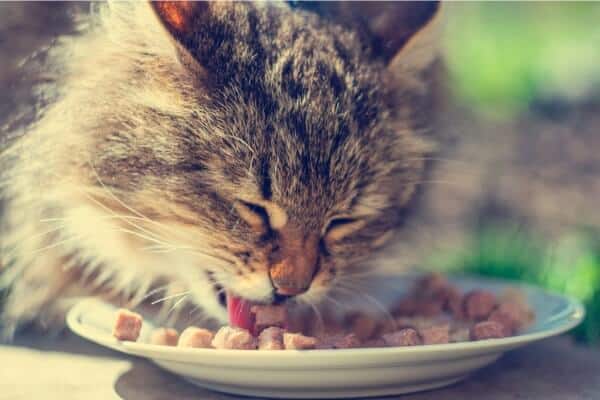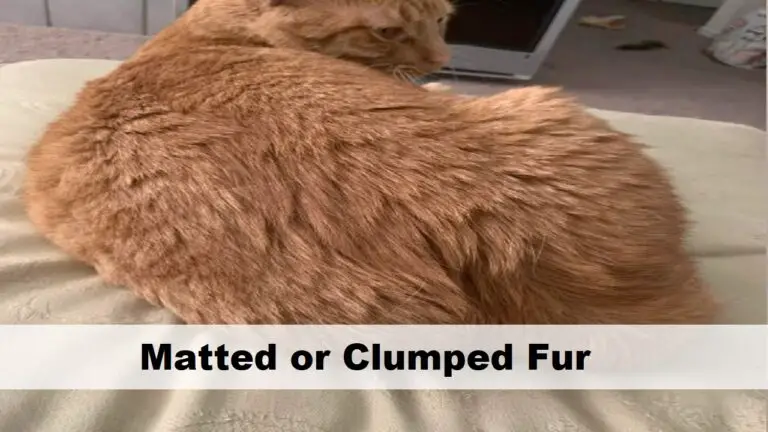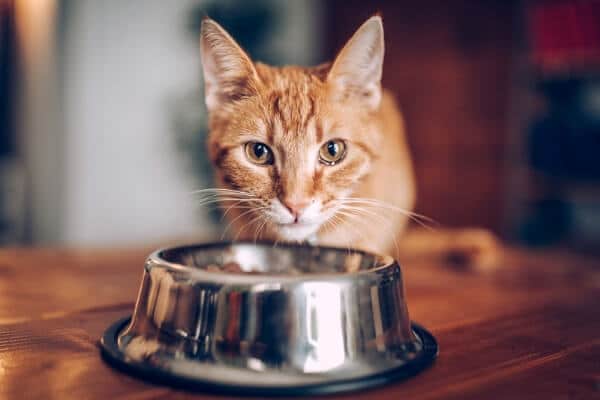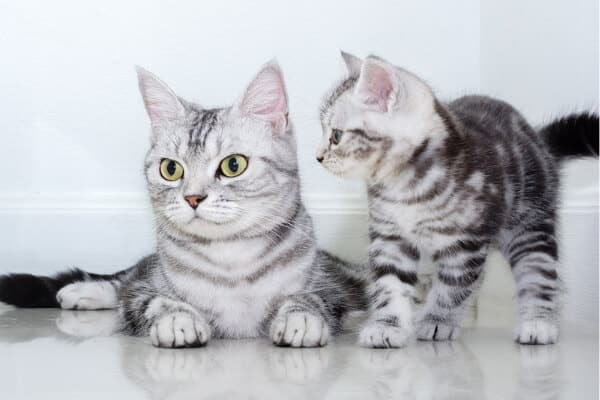What To Feed A 2 Month Old Kitten
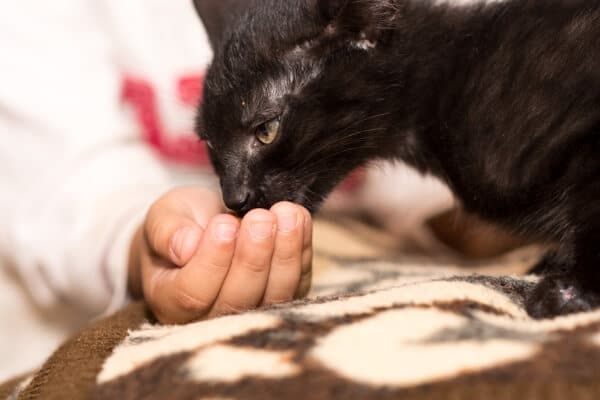
Caring for a 2-month-old kitten requires a delicate touch and an understanding of their unique needs. One of the most critical aspects of kitten care is providing them with a balanced and nutritious diet that promotes growth, vitality, and overall well-being.
At two months, your kitten is ready to transition from mother’s milk or a kitten milk replacer to a specially formulated kitten diet. Start with wet kitten food, which is both palatable and easy to chew for their still-developing teeth. The food should be high in protein, providing the necessary building blocks for their growing muscles. It’s also recommended to introduce small amounts of dry kitten food, which will help in keeping their teeth healthy and strong.
At two months, your kitten is ready to transition from mother’s milk or a kitten milk replacer to a specially formulated kitten diet. Start with wet kitten food, which is both palatable and easy to chew for their still-developing teeth. The food should be high in protein, providing the necessary building blocks for their growing muscles. It’s also recommended to introduce small amounts of dry kitten food, which will help in keeping their teeth healthy and strong.
Though small in size, kittens possess big appetites. Ensure to offer them several petite portions throughout the day, a feeding pattern that aligns with their inherent habits. Remember, every kitten is a unique individual, and diet customization might be required. Always consult with your vet to tailor a feeding regime, and maintain a constant supply of fresh water.
Read Also: 2 Week Old Kitten Hasn’t Opened Eyes. What Should I Do?
2 Month Old Kitten Nutrition
Proper nutrition is crucial for the healthy growth and development of a two-month-old kitty. At this age, kittens are transitioning from their mother’s milk to solid food, and their nutritional needs are changing rapidly. A balanced diet is essential to support their growing bodies and immune system.
The primary source of nutrition for a two-month-old kitten should be kitten-specific canned or wet food which should be given at least four to six times every day. These formulas are specially formulated to provide the necessary nutrients, such as proteins, fats, vitamins, and minerals, required for their development. Also, gradually throw in some dry food to their diet to get them used to it. When choosing dry food for kittens, opt for products specially formulated for their age group to ensure they receive the appropriate level of nutrients.
Kittens should also have access to clean, fresh water at all times to stay hydrated. Water intake is particularly important when feeding them dry kitten food, as it helps prevent dehydration. It’s essential to monitor their food intake and body condition to ensure they are not overeating or undernourished.
Overfeeding can lead to obesity, while underfeeding can result in stunted growth and health issues. Regular visits to the veterinarian are crucial during this stage to monitor the kitten’s growth and to receive guidance on their specific dietary needs.
What To Feed A 2-Months-Old Kitten Without A Mom?
Feeding a 2-month-old kitten without a mom can be a delicate task as they are still in their early stages of development and require proper nutrition to grow healthy and strong. The combination of wet canned food and dry food is a great choice to meet their nutritional needs. Wet canned food provides the moisture content that kittens need, as they may not drink enough water on their own, ensuring they stay hydrated. Additionally, it is easier for young kittens to consume and digest wet food due to its softer texture. Look for high-quality canned food specifically designed for kittens, as they require more nutrients than adult cats.
On the other hand, dry food serves as an essential part of their diet as well. It helps in promoting dental health by reducing tartar buildup and encouraging chewing, which strengthens jaw muscles. Dry food also contains essential nutrients and minerals that contribute to a balanced diet. Choosing the best one is of utmost importance to help with their growth and development.
To feed your 2-month-old kitten, who is without a mum, it’s essential to establish a feeding schedule. Kittens at this age typically need to be fed four to six times a day. Monitor their weight and body condition to ensure they are growing at a healthy rate. As they age, the feeding frequency can gradually be reduced. Always consult with a veterinarian to get personalized advice for your specific kitty’s needs.
How Often Should A 2-Month Old Kitten Eat Solid Food?
When it comes to the frequency of feeding a two-month-old kitten solid food, consistency is key. These furry bundles of joy have small stomachs but high energy needs, making regular, portioned meals crucial for their optimal growth and development
At two months of age, a kitten is transitioning to solid food and should ideally be fed four times a day. Scheduling their meals every 5-6 hours can help meet their high nutritional demand and sustain their energy levels throughout the day.
Remember, while a structured feeding schedule is essential, so is the quality of the food you provide. High-quality kitten food that is rich in protein should be the staple of their diet. Moreover, each kitten has unique dietary needs based on factors like breed, size, and overall health. Therefore, it’s always wise to consult with a vet to determine the best feeding routine and diet for your kitten.
Is It Okay To Wean Kittens At 2 Months?
Weaning kittens at 2 months is generally considered an appropriate age, as it aligns with their natural developmental milestones. Weaning is the process of transitioning kittens from a diet of solely mother’s milk to solid food. Around 2 months of age, kittens’ teeth start coming in, and they begin to explore their surroundings more actively. At this stage, their mother will naturally start reducing nursing sessions as the kittens’ nutritional needs increase beyond what milk alone can provide.
During weaning, it’s essential to introduce the kittens to high-quality kitten food. Initially, the food should be moistened to make it easier for them to eat and gradually transitioned to dry food as they grow more accustomed to it. It’s crucial to monitor their progress and ensure they are eating enough to support their growth and development.
While 2 months is generally a suitable age to start weaning, you should also consider the individual needs of each kitten. Some may wean a bit earlier, while others might take longer. Additionally, it’s essential to consult with a veterinarian to ensure the kittens are healthy and progressing well during the weaning process. Proper nutrition and care during this period are crucial for setting the kittens up for a healthy and happy life.
What Should I Do If My Kitten Doesn’t Want to Eat Solid Food?
If your kitten doesn’t want to eat solid food, it’s essential to approach the situation with patience and understanding. Here are some solutions you can try out:
1. Introduce The Solid Foods Slowly
The journey from mother’s milk to solid food is a big leap for kittens. Therefore, it’s advisable to introduce solid foods gradually to give them time to adjust. Begin by adding small amounts of solid food to their milk replacer to form a slush. The presence of familiar milk with new solid food will make the transition smoother.
Gradually decrease the milk ratio while increasing the amount of solid food over time. Remember that patience is key in this process.
2. Wet The Food
To help your kitten transition to solid food, you can try wetting their food. Dry kibble can be challenging for kittens to chew due to their developing teeth. Adding some water or broth to the dry food can soften it, making it easier for your kitten to eat.
The moistened food is also a great way to ensure your kitten stays hydrated. The texture and taste of wet food closely resemble that of their mother’s milk, which can help your kitten accept this new food more readily.
3. Regular Feeding Times
Consistency is essential when transitioning your kitten to solid food. Set regular feeding times throughout the day to create a routine for your kitten. This will not only help them understand when to expect food but also regulate their digestive system.
Ideally, at the age of two months, kittens should be fed four times a day. Maintaining these feeding intervals will keep your kitten’s energy levels steady and will encourage them to eat at each mealtime, aiding the transition to solid food.
4. Hand Feeding
If your kitten is reluctant to try solid food, hand feeding can be a helpful tactic. It can create a bond of trust and comfort between you and your kitten. Use your finger to offer a small amount of the wet food or kitten mush to your kitten.
Remember to clean your hands before and after feeding to maintain hygiene. Through hand feeding, you are providing a personal touch, and over time, your kitten may associate this positive experience with mealtime, making the transition to solid food easier.
5. Warm The Food
Serving warm food can entice your kitten to eat. Kittens are more likely to eat food that is closer to their body temperature, similar to the warmth of their mother’s milk. Warming the food can also enhance its aroma, making it more appealing to your kitten’s keen sense of smell.
Always test the temperature of the food before serving it to avoid overheating, as too hot food can harm your kitten. Providing warm food can be a comforting experience for your kitten and can make the new food more palatable.
6. Solo Feeding Times
If you have more than one kitten or other pets in your household, providing solo feeding times for your kitten can be beneficial. It ensures that your kitten gets the proper nutrition without any competition from their siblings or other pets.
This private feeding time also allows you to monitor your kitten’s eating habits closely, observe their preferences, and notice any potential feeding issues. It can provide a peaceful, stress-free environment for your kitten, making the transition to solid food a more pleasant experience.
7. Consult A Veterinarian
If despite all efforts, your kitten refuses to eat solid food, it’s crucial to consult a veterinarian. A professional can evaluate your kitten’s health to rule out any potential health issues that could be causing the reluctance to eat.
The vet may also provide specialized dietary recommendations or alternatives that could help with the transition. Remember, every kitten is unique and what works for one might not work for another. When in doubt, professional advice is always the best course of action.
Can 2-Months Old Kittens Eat Wet Food?
Yes, two-month-old kittens can eat wet food. Wet food is an ideal option during this stage as it is easier for young kittens to consume and digest. The soft texture of wet food makes it gentler on their developing teeth and gums, ensuring they can eat without discomfort. Wet food has a higher moisture content, helping to keep the kittens well-hydrated, which is crucial for their overall health, especially during hot weather or if they don’t drink much water independently.
When introducing wet food to two-month-old kittens, it’s essential to choose a high-quality kitten-specific formula to ensure they receive all the necessary nutrients for proper growth and development. The wet food should be specifically labeled as appropriate for kittens or all life stages, as it will have the right balance of proteins, fats, and other essential nutrients to support their young bodies. Gradually mix the wet food with a little warm water to create a gravy-like consistency if the kittens are having difficulty adapting to solid food at first.
What Happens To Mom’s Milk When You Wean Kittens At 2 Months?
As kittens begin to rely less on their mother’s milk and more on solid food, typically around the age of two months, the mother cat’s body naturally adjusts by reducing milk production. This happens because the demand for milk decreases, and the body responds to this change accordingly.
During this phase, the mother cat’s hormonal balance shifts. The production of prolactin, the hormone that stimulates milk production, decreases in response to the kittens nursing less. This gradual shift eventually leads to the cessation of milk production. However, the process is not immediate and can take a few weeks. Throughout this time, the mother cat’s or queen’s body absorbs any remaining milk, and her mammary glands start returning to their pre-pregnancy state.
While this process is generally smooth, it’s important to be aware of potential complications such as mastitis. Mastitis is an infection of the mammary gland that can occur if the weaning process is abrupt or if milk remains in the mammary gland for an extended period without being expressed. Symptoms can include swollen, warm, or painful mammary glands, and the mother cat might seem lethargic or unwell. If these signs are noticed, it’s essential to seek immediate veterinary care.
Final Thoughts
Feeding a 2-month-old kitten isn’t just a matter of filling a bowl; it’s the vital first step in setting up your young feline friend for a lifetime of health and vitality. The knowledge you’ve gained will guide your decisions, enabling a smooth transition from milk to solids.
By carefully selecting and introducing appropriate foods, maintaining a routine, and monitoring their reactions, you’re doing more than just feeding your kitten; you’re laying down the groundwork for good eating habits that will serve them well throughout their lives.
Ultimately, feeding a 2-month-old kitten may seem daunting, but with the right tools, it’s a challenge that can be met with success. Your efforts and attentiveness during this delicate period will pay off in the form of a thriving, healthy, and happy cat.
Related Articles
Read related posts about

